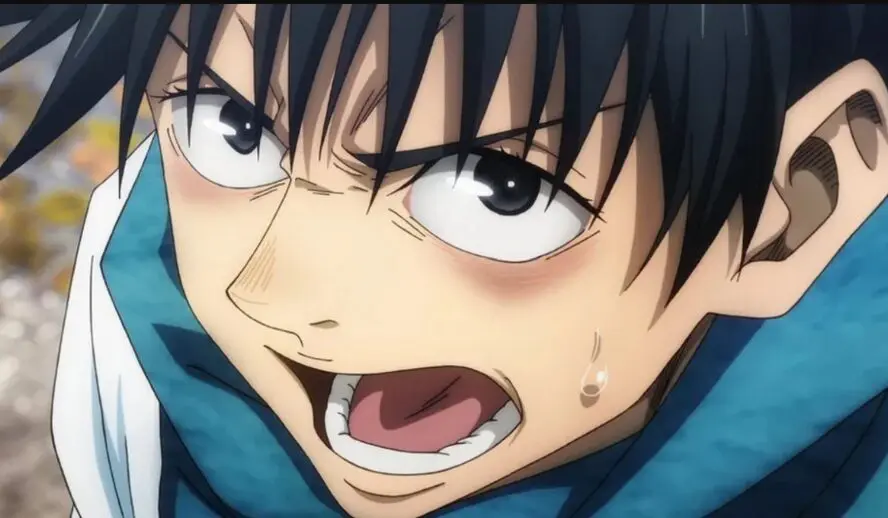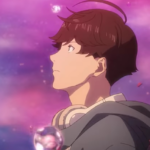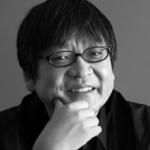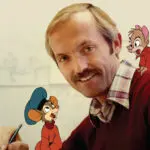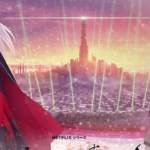Table of Contents
Humble Beginnings and Steady Growth
Japanese animation has been around since the very early days of film. The oldest known animated filmstrip from the country is believed to have been made around 1907, and the oldest theatrical piece of Japanese animation dates back to the year 1917. But it wasn’t until the 1960s that anime started to shape itself into what it is today. Around this time, shows like ‘Astro Boy’ and ‘Sally the Witch’ featured characters with big eyes, and cartoonish yet realistically-proportioned designs, which would become general hallmarks of anime. Japan would continue to produce animated series for decades to come, and the unique elements present in them would attract a worldwide fandom. However, in English-speaking countries, including the United States, it would be quite a long time until anime got the mainstream recognition it has now.
Things to do:
- Subscribe to The Hollywood Insider’s YouTube Channel, by clicking here.
- Limited Time Offer – FREE Subscription to The Hollywood Insider
- Click here to read more on The Hollywood Insider’s vision, values and mission statement here – Media has the responsibility to better our world – The Hollywood Insider fully focuses on substance and meaningful entertainment, against gossip and scandal, by combining entertainment, education, and philanthropy.
In America, anime was generally seen as something more niche throughout the late 20th century. Chances are good that if you asked a random person on the street if they knew what the word “anime” itself was, they wouldn’t be able to tell you. However, anime did still have a following back then, as a fair bit of it was dubbed and distributed through home video during the 80s and 90s, with some of it even airing on television. However, special attention to the fact that these were Japanese shows was never brought up. On the contrary, television anime was localized, with the names of characters (as well as the shows themselves) changed and the soundtracks completely re-made. One example of this would be ‘Robotech’, which was edited from three different anime series to create a unique show. Another anime, ‘Kyatto Ninden Teyandee’, was completely rewritten from the ground up allegedly due to translation issues, and thus became ‘Samurai Pizza Cats’. This version of the show was full of comedic banter and fourth wall breaks, which always referred to the show as a “cartoon”, likely due to the show being aimed at a young audience that wouldn’t have known what anime was at the time. Luckily, this form of localization didn’t last long, as the Sci-Fi Channel would start airing anime films in the mid-90s in a dedicated block known as “Saturday Anime”, with most of what was shown coming from the aforementioned video releases. This was merely the beginning, however, as even though a major network was acknowledging Japanese animation by its proper name, the art form was still fairly niche in its appeal. This was soon to change.
WATCH THE TRAILER of the Film and the Revolution: ‘Can I Go Home Now?’ The Children Around the World Continue to Ask the question
The Medium Gains Traction
It was around the late 90’s and early 2000’s when anime slowly began to creep into the American mainstream. In 1997, Cartoon Network launched an action-oriented block known as Toonami, which was well-known for mainly featuring anime. While many of the shows that were featured on this block, such as ‘Tenchi Muyo’ and ‘Outlaw Star’ are still fondly remembered to this day, the one show that became famous for introducing countless American kids to anime was ‘Dragon Ball Z’. Despite undergoing some mild censorship, the action series based on the manga by Akira Toriyama was an extremely popular addition to this block, and its newfound success continued for years to come. At around this same time, the video game-based mega-hit ‘Pokemon’ was similarly blowing in popularity, being so popular that the first five theatrical films based on the show were given wide releases in U.S. theaters, which for an anime was unheard of then. Meanwhile, the iconic 80’s classic ‘Akira’ was given a second chance at success in the country in 2001, with the distribution company Pioneer Entertainment giving the film a new English dub and a limited theater release. Hayao Miyazaki’s ‘Spirited Away’ became so acclaimed that it won Best Animated Feature at the 2002 Oscars. Finally, companies that officially licensed, translated, and released anime such as Funimation and ADV Films were now more active than ever, releasing countless anime series and movies on DVD. Even American cartoons like ‘Teen Titans’ and ‘Avatar: The Last Airbender’ started basing their art styles on anime.
Related article: MUST WATCH – The Hollywood Insider’s CEO Pritan Ambroase’s Love Letter to Black Lives Matter – VIDEO
In addition to film and television, anime was also gaining more traction thanks to the Internet, where anime fans from across the world could talk about and even watch anime. Groups of people would find ways to obtain Japanese releases of shows, provide subtitles, (or “fansubs” as they were called), and distribute them unofficially through either streaming or torrent sites. Even if these methods weren’t entirely legal, they allowed more people outside of Japan to watch certain anime shows before they were picked up by official English distributors. In the early years of YouTube, people often paid tribute to anime they liked with fanmade music videos colloquially referred to as AMVs. Websites like MyAnimeList made it easy for anime fans to not just log what they’ve watched, but gather in forums and socialize. The population of Western anime fans seemed to be growing by the day.
Related article: EVOLUTION: Every Ryan Gosling Role From 1995 to 2020, All Performances Exceptionally Poignant
Related article: EVOLUTION: Every Henry Cavill Role From 2001 to 2021, All Performances Exceptionally Poignant
Related article: Movie Soundtracks: What Can a Soundtrack Do to a Movie and its Entire Story?
Related article: The Oscars Best Animated Feature Category: How to Make it Work
The Media
The 2010s were when anime managed to achieve peak popularity. With YouTube becoming the sensation that it did, along with social media sites like Twitter being used by more and more people as the decade progressed, there were now more Western people than ever talking about anime. Fans could more easily gather in communities now and there grew to be countless YouTubers who would review, discuss, and react to various anime series. Over on television, the once-defunct Toonami made an unexpected return on Cartoon Network’s late-night adult programming block, where anime aimed at more mature audiences could now be shown. Deals being made between Japanese producers and distributors also gave way to occurrences such as the series ‘Space Dandy premiering in America a day before it did in Japan. Hit anime such as ‘Attack on Titan’ and ‘Jojo’s Bizarre Adventure’ were able to reach large audiences in the wake of the mainstream popularity anime was enjoying at this point. For the past few years, distributor Gkids has been giving more anime theatrical attention, giving newer films like ‘Mirai’ limited releases in both dubbed and subtitled screenings, in addition to having an annual event in which classic Studio Ghibli films are theatrically screened in both languages. Even children’s channels were now comfortable referring to anime by name, with Disney XD starting its dedicated anime block in 2017. Sure, inevitably, there are still people who aren’t fans of anime, but the impact the medium has had on American culture in the past decade is undeniable. Anime is just about everywhere now.
Related article: In-Depth Analysis | The Unexpected Queerness of ‘Bob’s Burgers’: Why the Show is an Animated Ally
Related article: EVOLUTION: Every Chris Evans Role From 1997 to 2020, All Performances Exceptionally Poignant
Related article: Twitter Users Share Their Cancellable Takes on Shows and Films
Whether people like it or not, anime has successfully made it to the American mainstream. What was once something that could easily be ignored or overlooked is now out in the open for all to at the very least hear about. It’s gotten to the point where a silly kid’s cartoon has an “otaku” character who directly references OVAs (or Original Video Animation, meaning direct-to-video films or miniseries); a far cry from the aforementioned ‘Samurai Pizza Cats’ calling itself a “cartoon” in its fourth-wall jokes. It’s safe to say that it’s a good time to be an anime fan because with just how recognized and easily accessible it is now, anime does not appear to be dying out anytime soon.
By Austin Oguri
Click here to read The Hollywood Insider’s CEO Pritan Ambroase’s love letter to Cinema, TV and Media. An excerpt from the love letter: The Hollywood Insider’s CEO/editor-in-chief Pritan Ambroase affirms, “We have the space and time for all your stories, no matter who/what/where you are. Media/Cinema/TV have a responsibility to better the world and The Hollywood Insider will continue to do so. Talent, diversity and authenticity matter in Cinema/TV, media and storytelling. In fact, I reckon that we should announce “talent-diversity-authenticity-storytelling-Cinema-Oscars-Academy-Awards” as synonyms of each other. We show respect to talent and stories regardless of their skin color, race, gender, sexuality, religion, nationality, etc., thus allowing authenticity into this system just by something as simple as accepting and showing respect to the human species’ factual diversity. We become greater just by respecting and appreciating talent in all its shapes, sizes, and forms. Award winners, which includes nominees, must be chosen on the greatness of their talent ALONE.
I am sure I am speaking for a multitude of Cinema lovers all over the world when I speak of the following sentiments that this medium of art has blessed me with. Cinema taught me about our world, at times in English and at times through the beautiful one-inch bar of subtitles. I learned from the stories in the global movies that we are all alike across all borders. Remember that one of the best symbols of many great civilizations and their prosperity has been the art they have left behind. This art can be in the form of paintings, sculptures, architecture, writings, inventions, etc. For our modern society, Cinema happens to be one of them. Cinema is more than just a form of entertainment, it is an integral part of society. I love the world uniting, be it for Cinema, TV, media, art, fashion, sport, etc. Please keep this going full speed.”
More Interesting Stories From The Hollywood Insider
– Want GUARANTEED SUCCESS? Remove these ten words from your vocabulary | Transform your life INSTANTLY
– A Tribute to Martin Scorsese: A Complete Analysis of the Life and Career of the Man Who Lives and Breathes Cinema
– Do you know the hidden messages in ‘Call Me By Your Name’? Find out behind the scenes facts in the full commentary and In-depth analysis of the cinematic masterpiece
– A Tribute To The Academy Awards: All Best Actor/Actress Speeches From The Beginning Of Oscars 1929-2019 | From Rami Malek, Leonardo DiCaprio To Denzel Washington, Halle Berry & Beyond | From Olivia Colman, Meryl Streep To Bette Davis & Beyond
– In the 32nd Year Of His Career, Keanu Reeves’ Face Continues To Reign After Launching Movies Earning Over $4.3 Billion In Total – “John Wick”, “Toy Story 4”, “Matrix”, And Many More

Austin Oguri is a screenwriter and has deep appreciation for the art of film in general, he aims to offer unique perspectives through his film reviews and feature articles. He also has a soft spot for lesser-known works, and enjoys spotlighting them whenever he can. Austin has always found it necessary for people to encourage and bring out the best in each other, and as a writer at The Hollywood Insider, he can combine that ideology with his ability to think outside the box and truly express his love for the arts in the best ways possible.

